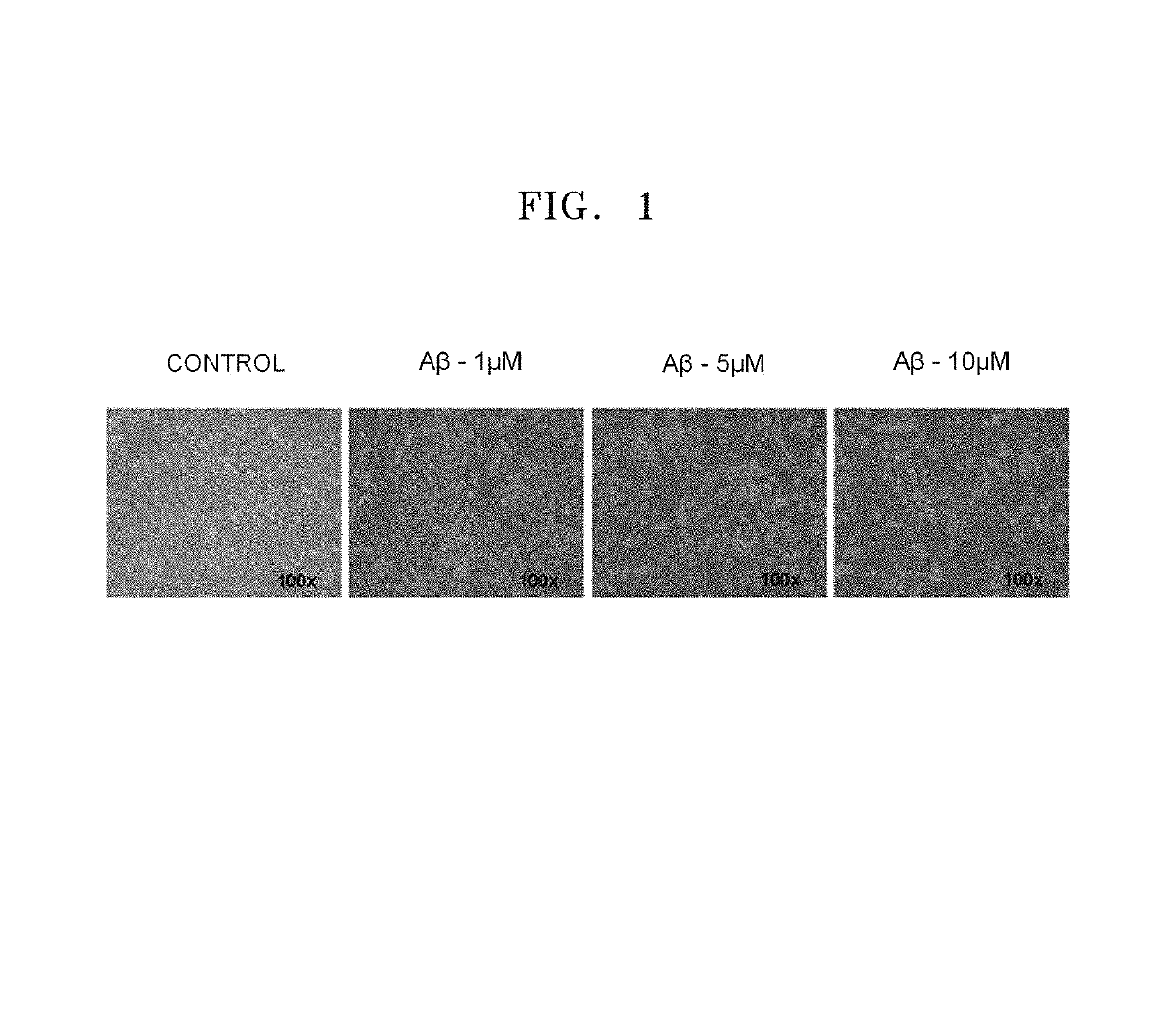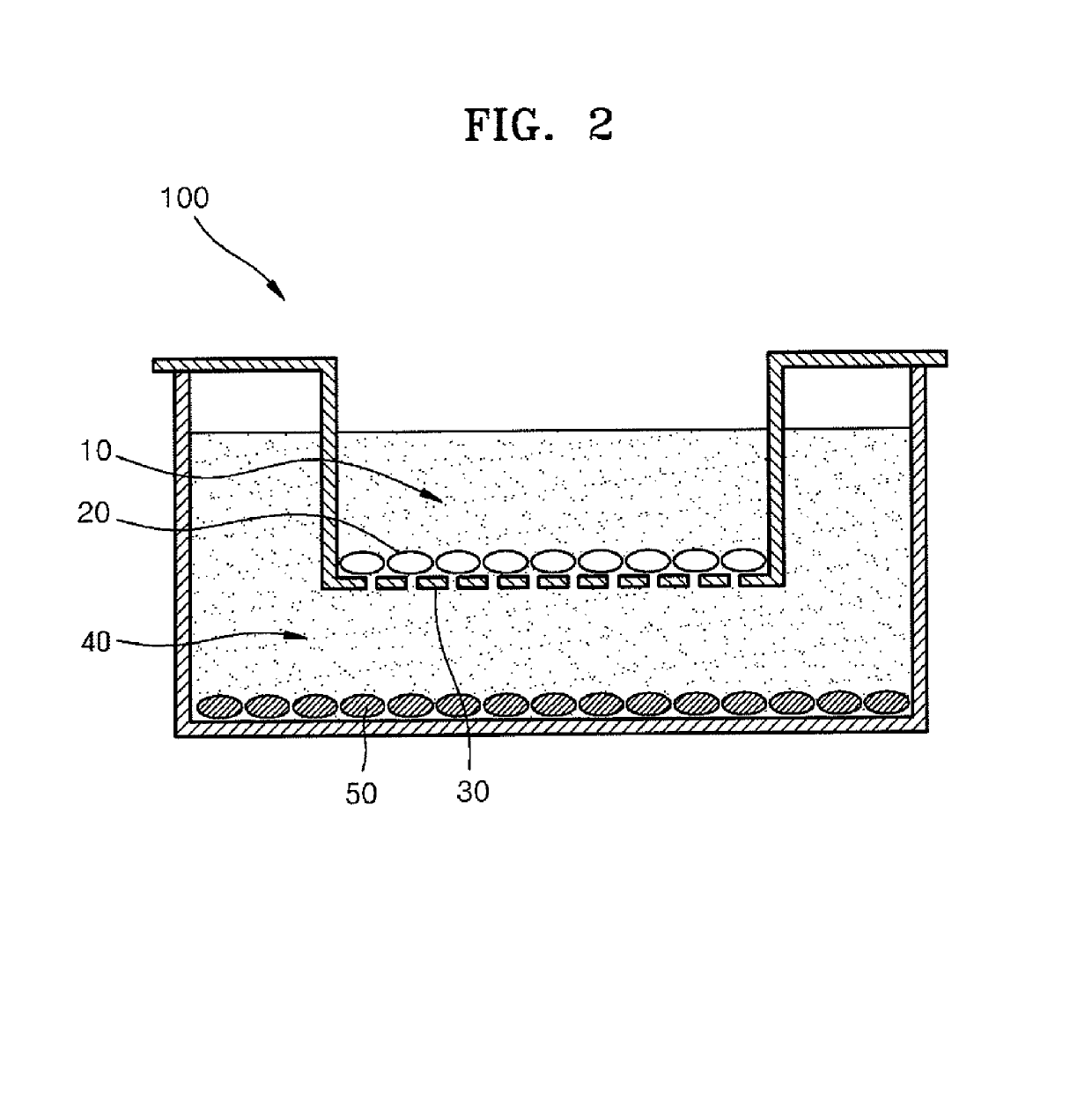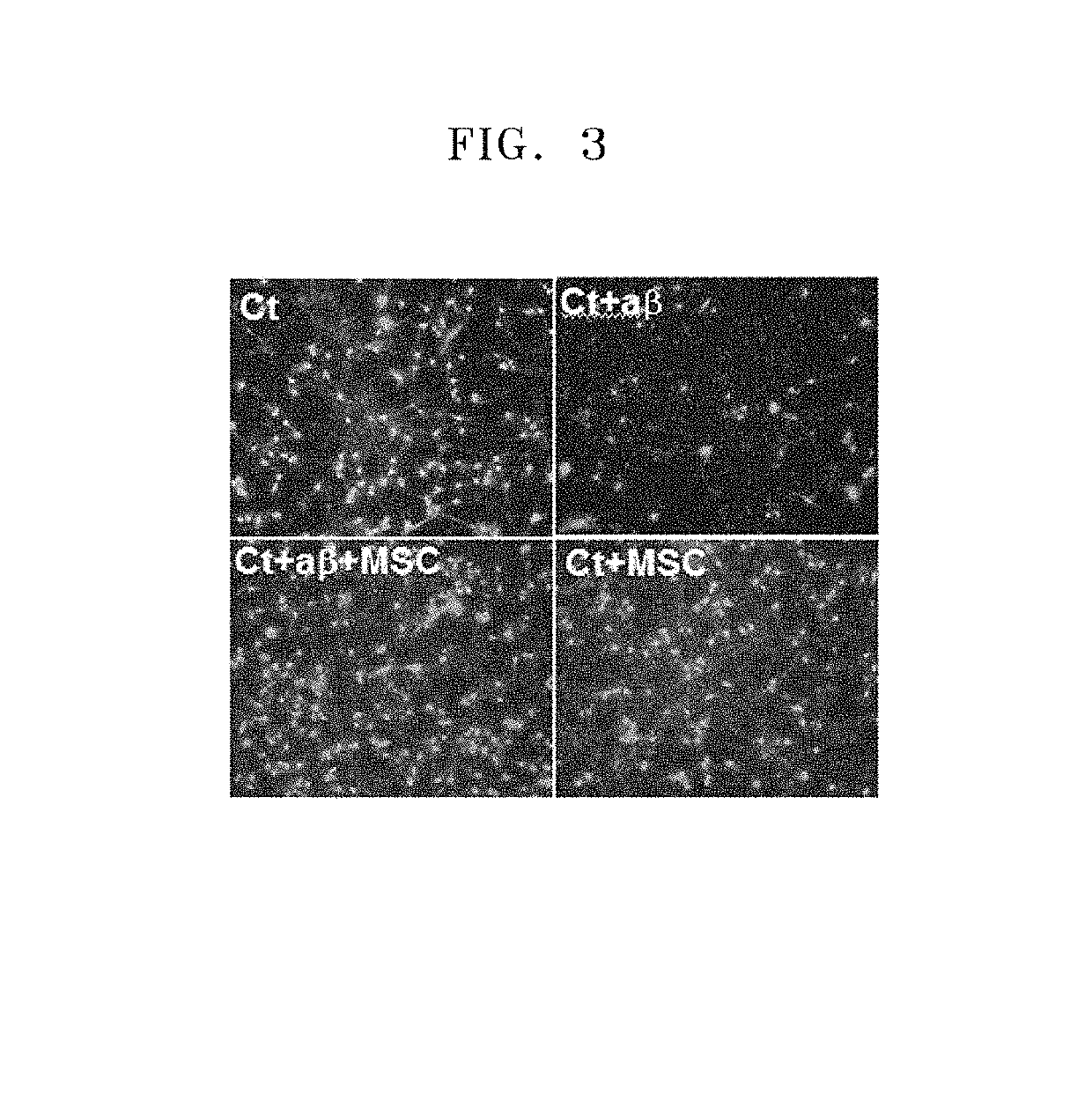Composition comprising a culture solution of mesenchymal stem cells for the treatment of neural diseases
a technology of mesenchymal stem cells and culture solution, which is applied in the direction of drug compositions, skeletal/connective tissue cells, peptide/protein ingredients, etc., can solve the problems of alzheimer's disease cannot be completely cured, memory, reasoning, judgment, language, etc., and achieves the prevention of phosphorylation of tau protein in neurons, effective cellular treatment, and the effect of preventing damage to neurites
- Summary
- Abstract
- Description
- Claims
- Application Information
AI Technical Summary
Benefits of technology
Problems solved by technology
Method used
Image
Examples
example 1
and Cultivation of Neural Stem Cells
[0128]Neural stem cells used herein were isolated as follows. Neural stem cells were isolated from the cerebral cortex and hippocampus of an embryonic day 14 (E14) Sprague-Dawley rat (Orient Bion Inc., Korea). First, the abdomen of a pregnant rat was incised, and the embryo was isolated using a scissors and forceps. The embryo was washed with a Hank's balanced salt solution (HBSS) for dissection and placed in a dish containing ice-cold HBSS. The cerebral cortex and hippocampus were isolated from the E14 embryo using needles and forceps under a microscope. The isolated cerebral cortex was pipetted 10 to 20 times into single cells in a serum-free culture solution using pipettes. The single cells were treated with poly-L-ornithine (15 μg / ml, Sigma, St. Louis, Mo.) at 37° C. for 16 hours and smeared on a cover slip coated with fibronectin (1 μg / ml, Sigma) for at least 2 hours. The single cells were cultured in a serum-free Neurobasal™ culture medium (...
example 2
and Amplification of UCB-Derived MSCs
[0129]An umbilical cord blood (UCB) sample was collected from the umbilical vein right after childbirth with the mother's approval. Specifically, the umbilical vein was pricked with a 16-gauge needle connected to an UCB collection bag containing 44 mL of a citrate phosphate dextrose anticoagulant-1 (CPDA-1) anticoagulant (Green Cross Corp., Korea) such that the UCB was collected in the collection bag by gravity. The UCB thus obtained was handled within 48 hours after collection, and the viability of the monocytes was more than 90%. The collected UCB was centrifuged using a Ficoll-Hypaque gradient (density: 1.077 g / mL, Sigma) to obtain mononuclear cells and the mononuclear cells were washed several times to remove impurities. The cells were suspended in a minimal essential medium (α-MEM, Gibco BRL) supplemented with 10% to 20% of FBS (HyClone). The cells were introduced into the minimal essential medium supplemented with 10% to 20% of FBS to an op...
example 3
[0130]In order to prepare ideal conditions for an outbreak of Alzheimer's disease, the neurons differentiated as described in Example 1 were cultured in a serum-free Neurobasal™ culture medium without bFGF and B27 and including 10 μM of amyloid-beta protein fragment 1-42 (Aβ42, sigma, A9810) that is known to cause Alzheimer's disease. After 3 to 4 days of differentiation of the neural stem cells, morphological characteristics of the neural stem cells were observed using a microscope. If the differentiation into neurons was identified, the cells were treated with Aβ for 24 hours.
[0131]FIG. 1 illustrates optical microscopic images of live neurons untreated and treated with amyloid-beta for 24 hours to measure morphological changes of the neurons. As the concentration of the amyloid-beta increased, the number of dead neurons increased. In FIG. 1, the control shows neurons cultured in a serum-free Neurobasal™ culture medium without amyloid-beta, the Aβ-1 μM, Aβ-5 ...
PUM
| Property | Measurement | Unit |
|---|---|---|
| average molecular weight | aaaaa | aaaaa |
| diameter | aaaaa | aaaaa |
| temperature | aaaaa | aaaaa |
Abstract
Description
Claims
Application Information
 Login to View More
Login to View More - R&D
- Intellectual Property
- Life Sciences
- Materials
- Tech Scout
- Unparalleled Data Quality
- Higher Quality Content
- 60% Fewer Hallucinations
Browse by: Latest US Patents, China's latest patents, Technical Efficacy Thesaurus, Application Domain, Technology Topic, Popular Technical Reports.
© 2025 PatSnap. All rights reserved.Legal|Privacy policy|Modern Slavery Act Transparency Statement|Sitemap|About US| Contact US: help@patsnap.com



